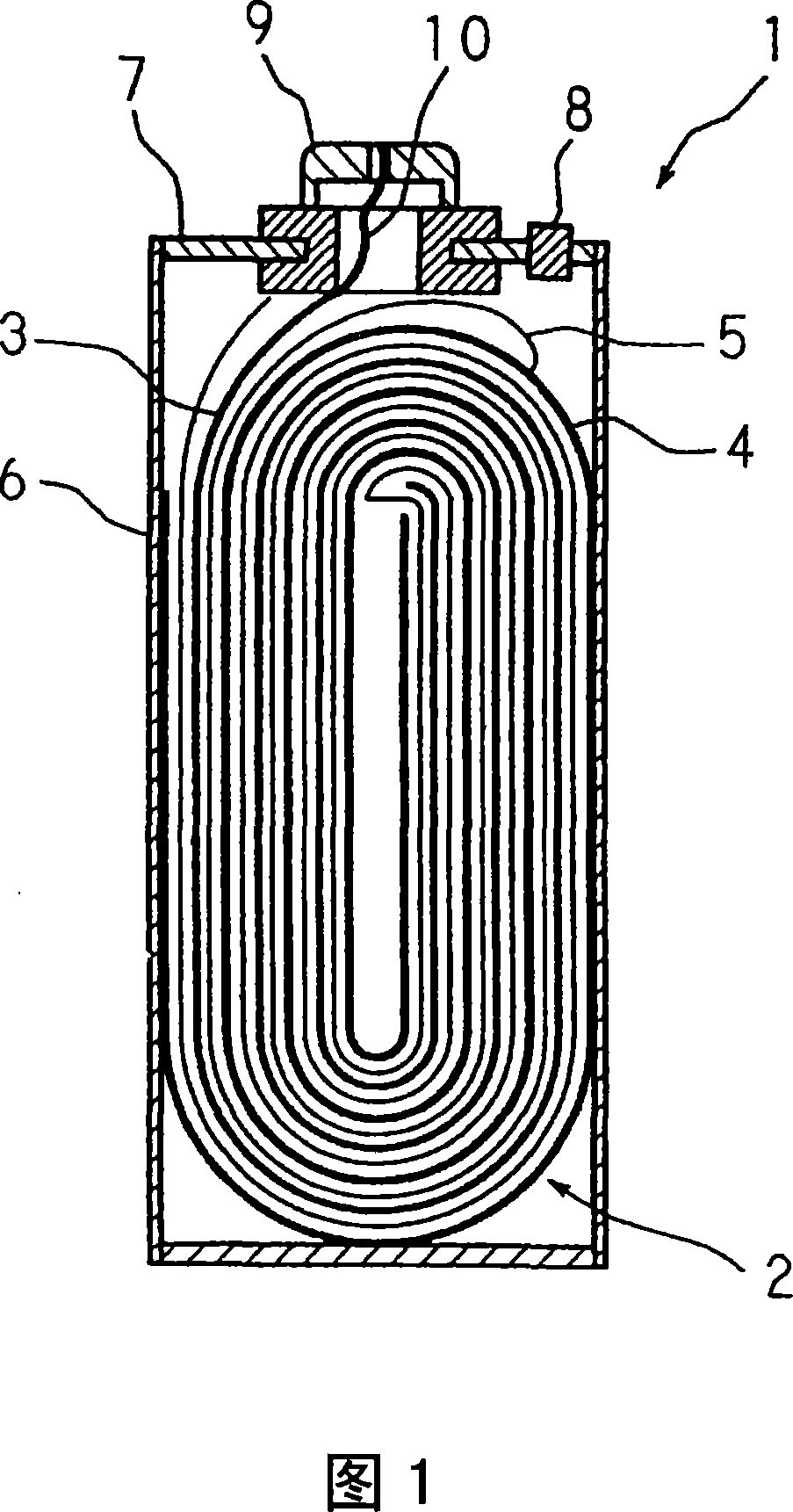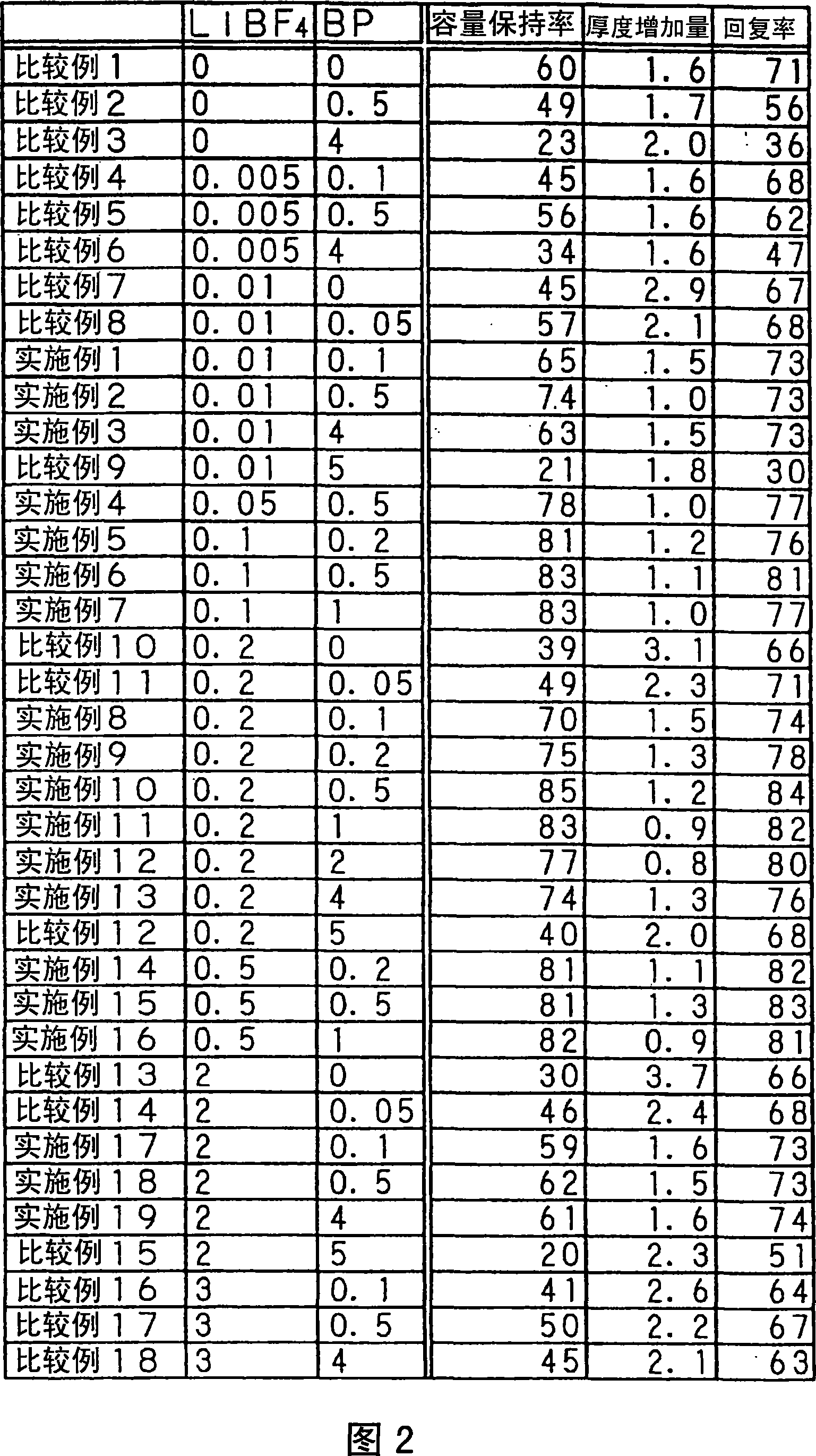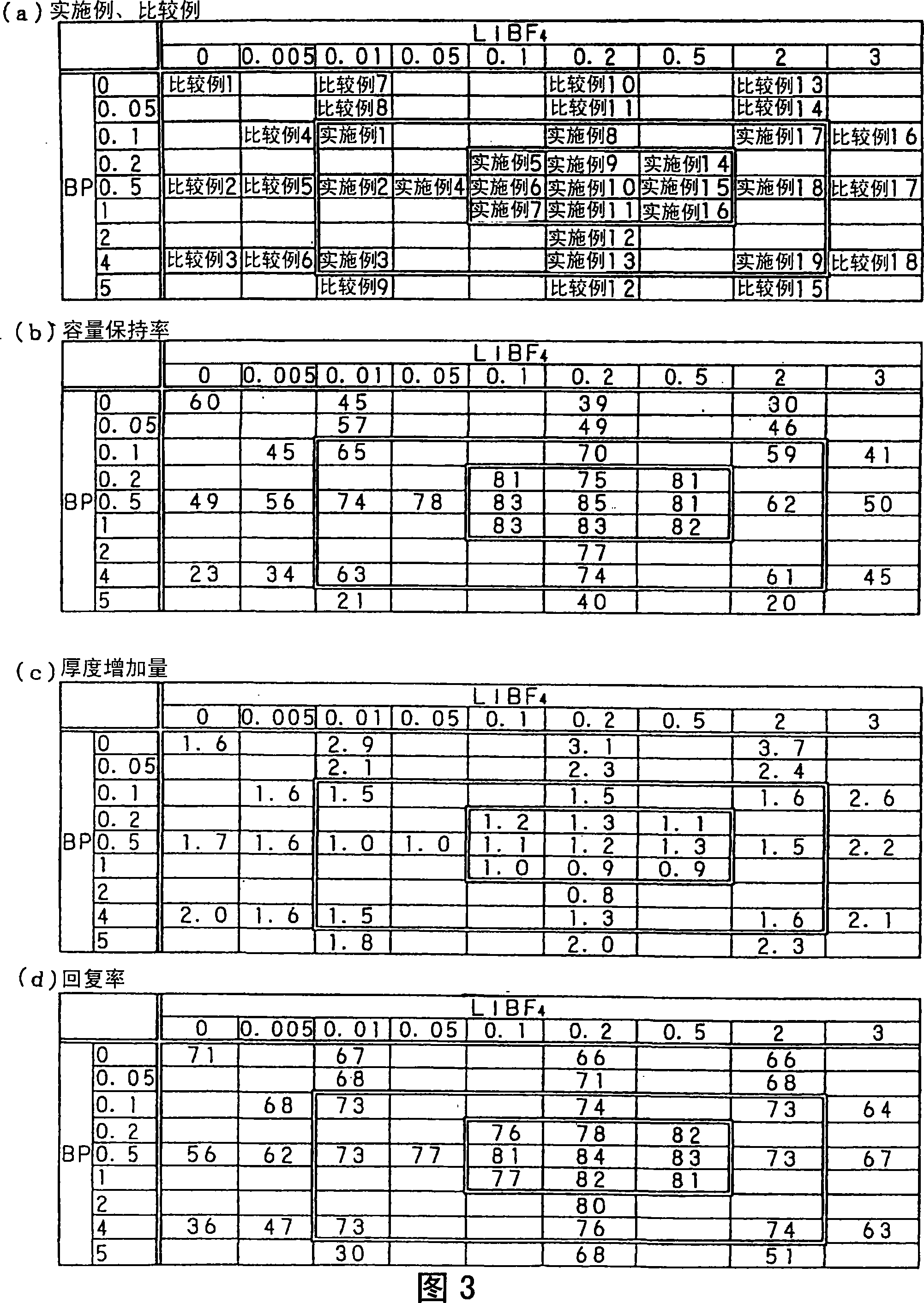Nonaqueous electrolyte secondary battery
A non-aqueous electrolyte and secondary battery technology, which is applied in the direction of non-aqueous electrolyte storage batteries, secondary batteries, battery electrodes, etc., can solve the problems of reduced output characteristics, service life characteristics, increased battery expansion, and reduced charge-discharge cycle life characteristics.
- Summary
- Abstract
- Description
- Claims
- Application Information
AI Technical Summary
Problems solved by technology
Method used
Image
Examples
Embodiment 1
[0067] FIG. 1 is a cross-sectional view showing a configuration example of a nonaqueous electrolyte secondary battery of the present invention. In Fig. 1, 1 is a square non-aqueous electrolyte secondary battery (hereinafter referred to as a battery), 2 is an electrode group, 3 is a negative pole, 4 is a positive pole, 5 is a diaphragm, 6 is a battery case, 7 is a battery cover, and 8 is a Safety valve, 9 is the negative terminal, and 10 is the negative lead. The electrode group 2 is formed by winding a negative electrode 3 and a positive electrode 4 in a flat shape with a separator 5 interposed therebetween. The electrode group 2 and the electrolytic solution (electrolyte) are housed in the battery case 6 , and the opening of the battery case 6 is sealed by laser welding a battery cover 7 provided with a safety valve 8 . The negative electrode terminal 9 is connected to the negative electrode 3 via the negative electrode lead 10 , and the positive electrode 4 is connected to ...
Embodiment 2
[0072] The same battery as in Example 1 was produced except that the BP added to the electrolytic solution was 0.5% by mass.
Embodiment 3
[0074] The same battery as in Example 1 was produced except that the BP added to the electrolytic solution was 4% by mass.
PUM
| Property | Measurement | Unit |
|---|---|---|
| density | aaaaa | aaaaa |
| thickness | aaaaa | aaaaa |
Abstract
Description
Claims
Application Information
 Login to View More
Login to View More - R&D
- Intellectual Property
- Life Sciences
- Materials
- Tech Scout
- Unparalleled Data Quality
- Higher Quality Content
- 60% Fewer Hallucinations
Browse by: Latest US Patents, China's latest patents, Technical Efficacy Thesaurus, Application Domain, Technology Topic, Popular Technical Reports.
© 2025 PatSnap. All rights reserved.Legal|Privacy policy|Modern Slavery Act Transparency Statement|Sitemap|About US| Contact US: help@patsnap.com



